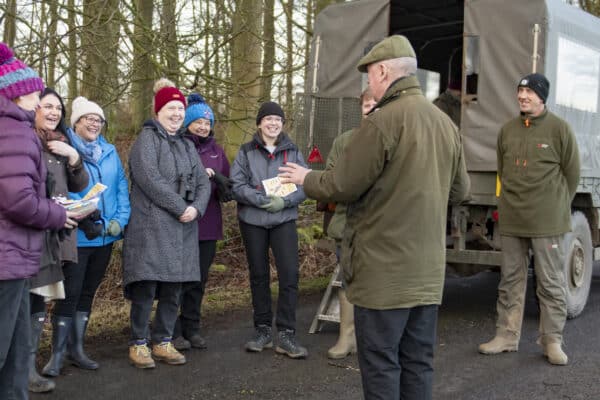On a beautiful morning in County Durham, staff and volunteers donned their boots and binoculars to take part in the Game and Wildlife Conservation Trust’s Big Farmland Bird Count. Ably assisted by the Estate’s keepers, each team spent half an hour spotting birds across various fields, parks and hedgerow sites in both the Durham and Shropshire Estates. Whilst the event’s main aim was to support GWCT in understanding the species and numbers of birds in the landscape, it was also a great opportunity for different people, from different departments, to get together, get to know one another a little better, have a little bit of fresh air and exercise, and a lot of fun.
The most frequently spotted types of birds were corvids – rooks, crows and jackdaws and gulls – herring gulls, black-headed gulls and common gulls in the main. However, in Durham, the single most identified bird was the Lapwing, a UK priority species, which has suffered declining populations across the country due to changing farming practices since the 1970s. Other birds identified included game birds – mostly pheasants; ubiquitous pigeons and starlings; raptors, including buzzards, a barn owl and a single red kite; herons and other waterfowl, typically teal, shelduck, mallards and moorhens, whilst songbirds, like blue tits, thrushes and various finches, despite their very audible chittering and noisy clamouring in the bushes, were not actually seen in more than ones and twos at most of the sites.
Meanwhile, in Shropshire, despite the poor weather, the Raby Shropshire Team managed to spot a more colourful array in the gloom: greenfinches, goldfinches, linnets and yellowhammers were seen across varied areas of cover crops, wild bird seed mixes, hedgerows and arable land. It was the first time that Raby has taken part in the survey, which will now continue each year to enable us to gather valuable information on the birds present across the Estate and hopefully track the impact of the various Environmental Stewardship and wildlife friendly farming initiatives we have adopted across the land.


